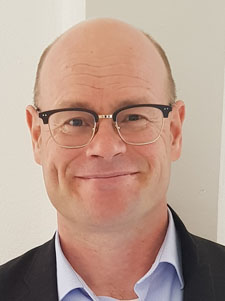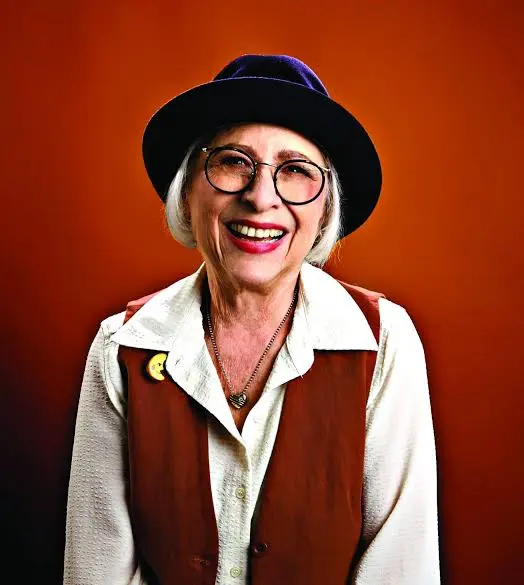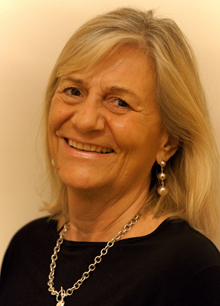Life Review at the Gate of Death
Printed in the Summer 2025 issue of Quest magazine.
Citation: Savinainen, Antti, "Life Review at the Gate of Death" Quest 113:3, pg 20-23
Life Review at the Gate of Death
By Antti Savinainen
 Theosophical sources describe a life review at the beginning of the death process. The first description is found in 1882 in The Mahatma Letters to A.P. Sinnett (see below). After that, H.P. Blavatsky and Annie Besant added more details about the life review. Later, the Finnish Rosicrucian Theosophist Pekka Ervast (1875–1934) provided a somewhat more comprehensive description of the life review.
Theosophical sources describe a life review at the beginning of the death process. The first description is found in 1882 in The Mahatma Letters to A.P. Sinnett (see below). After that, H.P. Blavatsky and Annie Besant added more details about the life review. Later, the Finnish Rosicrucian Theosophist Pekka Ervast (1875–1934) provided a somewhat more comprehensive description of the life review.
After five decades of research, the science of the near-death experience (NDE) has provided independent data on the life review. People who have survived heart attacks or other life threatening situations sometimes talk about how some or all instances of their lives were available to them in a very brief time. Expressions like “I saw my life flash before my eyes” have become part of Western culture.
I will discuss and compare life reviews from the perspectives of both NDE research and Theosophy. These perspectives have intriguing commonalities as well as some differences. First, however, I will present the first published account of the life review, which contains many features that also appear in the NDE research and Theosophical descriptions.
The First Published Account of a Life Review
British naval officer Francis Beaufort (1774–1857) provides the first published account of life review. The experience, which was induced when he nearly drowned in 1791, was written down in a letter circa 1825 and published in the autobiography of the English naval officer Sir John Barrow in 1847. Following is an excerpt:
Though the senses were thus deadened, not so the mind; its activity seemed to be invigorated, in a ratio which defies all description—for thought rose after thought with a rapidity of succession that is not only indescribable, but probably inconceivable, by any one who has not himself been in a similar situation . . . Thus travelling backwards, every past incident of my life seemed to glance across my recollection in retrograde succession; not, however, in mere outline, as here stated, but the picture filled up with every minute and collateral feature; in short, the whole period of my existence seemed to be placed before me in a kind of panoramic review, and each act of it seemed to be accompanied by a consciousness of right or wrong, or by some reflection on its cause or its consequences; indeed, many trifling events which had been long forgotten then crowded into my imagination, and with the character of recent familiarity . . .
The length of time that was occupied by this deluge of ideas, or rather the shortness of time into which they were condensed, I cannot now state with precision, yet certainly not two minutes could not have elapsed from the moment of suffocation to that of my being hauled up. (in Barrow, 399‒401)
Beaufort’s account recapitulates the essential features of the life review:
- The operation of the mind is highly enlightened.
- The memories are detailed, and long-forgotten memories are available.
- The memories are described as being panoramic, although they are viewed in retrograde order.
- There is a moral evaluation of the actions and awareness of their causes and consequences.
- The time during which the life review takes place is at most two minutes.
Scientific Research on the Life Review
Many near-death experiencers (NDERs) describe their life reviews in terms of watching a movie of their own life. Some NDERs see their whole life with detailed memories, whereas some glimpse only fragments. At any rate, they view themselves from a third-person perspective. Moreover, some people can feel how their actions and words made other people—and animals—feel. Here is an excerpt from such a life review:
It was the proverbial “life flashing before my eyes” or life review, as I have since heard it called. I would describe this as a long series of feelings based on numerous actions in my life. The difference was that not only did I experience the feelings again, but I had some sort of empathetic sense of the feeling of those around me who were affected by my actions. In other words, I also felt what others felt about my life. (Long and Perry, 108–09)
The life review often reveals that little acts of kindness are important and that our everyday judgment of our actions or inactions may not be correct:
I saw how acting, or not acting, rippled in effect towards other people and their lives. It wasn’t until then that I understood how each little decision or choice affects the world. I learned that many of the things I thought were “wrong” were not necessarily wrong. I also learned of opportunities to love others that I passed up. (Long and Perry, 114)
In addition to actions and words, thoughts have an impact on the world: “I found out that not even your thoughts are lost . . . every thought was there” (Lorimer, 13).
Thoughts have their effect on other sentient beings as well as on nature:
For me it was a total reliving of every thought I had ever thought, every word I had ever spoken, and every deed I had ever done; plus the effect of every each thought, word, and deed on everyone and anyone who had ever come within my environment or sphere of influence whether I knew them or not (including unknown passers-by on the street); plus the effect of each thought, word and deed on weather, plants, animals, soil, trees, water, and air. (Lorimer, 14)
About half of the informants in a 1995 study by researchers Ian Stevenson and Emily Williams Cook reported that they remembered their “whole life” or “everything.” The same study reported that 23 percent of informants had a simultaneous sequence, a panoramic memory, whereas 50 percent reported that their life review took place from birth or childhood to the present. Only 13 percent reported having a sequence of memories going from the present back to childhood.
Although the timing of the life review is difficult, Stevenson and Cook could place outer limits of duration in drowning cases to a few minutes and, in the case of falls, only a few seconds. In some reported cases, the duration of the life review was much longer (and occurred more slowly).
The judgment of past life actions is typically carried out by the NDERs themselves. However, the NDER is sometimes accompanied by a spiritual being who acts as a loving guide and helper and whose comments help put their life in a higher perspective. There is rarely negative judgment by the spiritual being, although the NDERs can see the effects of their hurtful actions on other living beings. One crucial lesson conveyed by many NDERs is that there are only two things one takes to the other side: knowledge and love.
The life review and the NDE in general have a life-changing effect on the experiencers. Dr. Raymond Moody, who published Life after Life, the first book on the NDE, in 1975, has called it “one-minute psychotherapy.” Here is an excerpt on the aftereffects:
Over the years I’ve undergone a number of changes. I feel a strong connection with nature . . . I’ve acquired a great sense of justice. I’ve become more patient and peaceful. I can see things in perspective now. My aggression is a thing of the past. I feel a strong inner urge to never lie again. I’d rather keep silent than tell a little white lie. I do struggle with deadlines: things must get done within a certain time . . . I enjoy life immensely . . . I believe that people have stopped living from the heart. (van Lommel, 47–48)
Theosophical Descriptions of the Life Review
The earliest Theosophical account of the life review is provided in a Mahatma letter from 1882:
At the last moment, the whole life is reflected in our memory and emerges from all the forgotten nooks and corners picture after picture, one event after the other. The dying brain dislodges memory with a strong supreme impulse, and memory restores faithfully every impression entrusted to it during the period of the brain’s activity . . . Yet from the last pulsation, from and between the last throbbing of his heart and the moment when the last spark of animal heat leaves the body—the brain thinks and the Ego lives over in those few brief seconds his whole life over. (Letter 93b, in Chin, 326)
This passage states that all memories are faithfully restored and lived by the Ego. This is an important distinction: the Ego does not refer to the personality but to the higher self behind the personality. The higher self is the true essence of a human being, responsible for each incarnation and enriched by the spiritual efforts of the personality on earth. Notably, the judgment in the life review is not conducted by the mere personality but by a much wiser higher self.
Another interesting point is the duration of the life review: within a few seconds, all memories of the whole life are reviewed. This is consistent with some reported life reviews, for instance in the context of falling from heights.
The second Theosophical account of the life review is provided by HPB:
At the solemn moment of death every man, even when death is sudden, sees the whole of his past life marshalled before him, in its minutest details. For one short instant the personal becomes one with the individual and all-knowing Ego. But this instant is enough to show him the whole chain of causes which have been at work during his life. He sees and now understands himself as he is, unadorned by flattery or self-deception. He reads his life, remaining as a spectator looking down into the arena he is quitting; he feels and knows the justice of all the suffering that has overtaken him. (Blavatsky, 162)
Blavatsky adds that the dying person understands their life in a much deeper way and “feels and knows” why they have suffered. This is possible because the personality becomes “one with . . . the all-knowing Ego.” There seems to be an implicit element of evaluating the past life, since the dying person objectively understands themselves. All this takes place “for one short instant,” which is consistent with the passage in the Mahatma letter (“those few brief seconds”). Moreover, the dying individual is just a spectator of the unfolding memories.
Annie Besant, Blavatsky’s student and later the president of the Theosophical Society, described the dying process in terms of separating the etheric body from the physical, using the term “panorama”: “Slowly the lord of the body draws himself away, enwrapped in the violet-grey etheric body, and absorbed in the contemplation of the panorama of his past life, which in the death-hour unrolls before him, complete in every detail” (Besant, 109).
Pekka Ervast’s Account of the Life Review
Pekka Ervast was the pioneer of the Finnish Theosophical movement (see “Pekka Ervast: A Finnish Theosophist,” Quest, spring 2025). His most detailed account of the life review was provided in lectures from 1928–29:
When consciousness moves to the etheric brain during death, all memories are alive in front of us. Therefore, a person reviews the past life in all its details, although this happens very fast. What has happened in life through the decades is seen within half an hour as films in memory, yet everything happens in detail, while the person is outside the whole play . . . He does not live in his reminiscences as he did while being physically alive. He just watches the great play and judges it objectively, calling each thing—depending on its own quality—as good or bad, crime or merit, and so on. He remains in a great light, so to speak . . . In fact, the viewer is the personalized higher self. In death the solemn experience of memories is not due to the ordinary physical personality; instead, it is due to the higher self, the “I,” which is behind the physical personality. (Marjanen et al., 37–38)
Ervast’s account is in many respects consistent with the Theosophical descriptions above: he too talks about reviewing all details of a past life. This review takes place objectively, without an emotional component, and it is permeated with an ethical evaluation of all deeds. This is possible because the viewer is not the personality, but rather “the personalized higher self,” which aligns with what the cited Theosophical authors have stated. But there is one difference from the other descriptions presented above: Ervast states that while the life review happens fast, it takes place “within half an hour,” not seconds or days.
Discussion
Theosophical sources maintain that there is an objective evaluation of all deeds in the life review. The judgment aspect is consistent with the NDE descriptions, although Theosophical accounts differ from many (but not all) NDE accounts at in one respect: according to Theosophy, the emotional component is absent. Interestingly, the first written account of the NDE by Francis Beaufort is in line with the Theosophical view.
According to Theosophy, the second phase of the unfolding death process is entering kamaloka or the astral world. The soul will live through all the deeds, words, and thoughts in kamaloka and intensely feel how their actions affected other sentient beings.
Incidentally, the perspective of later Theosophy differs from that of the Mahatma Letters. According to the latter, the deceased individual is unconscious in kamaloka rather than experiencing their actions. (Deaths resulting from accidents and suicides are exceptions to this rule.)
This life review in kamaloka can be very painful, but its purpose is to become free from earthly life and its digressions; some religions call this state purgatory. The purgatory state resembles the NDE descriptions of the life review, since in both cases the effect of past actions is felt the same way as other people felt them. The emotional aspect of the life review can cause remorse and a strong will within NDERs to make amends. Still, it does not appear to be painful in the same sense that Theosophical descriptions of kamaloka imply. Rather, it seems that the emotional component of the NDE life review acts as a way of knowing how the world was affected by their actions.
To sum up, the many accounts of the NDE life review have interesting similarities and differences. On the one hand, they involve reviewing at least parts of past life deeds in order to understand how they affected others. NDERs also recall long-forgotten memories. On the other hand, the details vary: some see all the memories at once in a panoramic style, some relive their life from childhood to present, and some relive from present to childhood. Moreover, some life reviews take place within a few seconds, whereas some last a few minutes (and others can take a considerably longer time).
The life review can have life-changing effects on NDERs. It can also be a life-changing experience for those who delve into these accounts. The life review reveals the ethical core of life shared by all great religions and true philosophies: compassion and love toward all sentient beings.
Sources
Emphasis in quoted material is from the original.
Barrow, Sir John. An Auto-biographical Memoir of Sir John Barrow, Bart., Late of the Admiralty: Including Reflections, Observations, and Reminiscences at Home and abroad, from Early Life to Advanced Age. London: John Murray, 1847.
Besant, Annie. The Ancient Wisdom: An Outline of Theosophical Teachings. 2d ed. Adyar: Theosophical Publishing House, 2015 [1897].
Blavatsky, H.P. The Key to Theosophy. Pasadena, Calif.: Theosophical University Press, 2002 [1889].
Chin, Vicente Hao, Jr., ed. The Mahatma Letters to A.P. Sinnett in Chronological Sequence. Quezon City, Philippines: Theosophical Publishing House, 1993.
Long, Jeffery, and Paul Perry. Evidence of the Afterlife: The Science of Near-Death Experiences. New York: HarperOne, 2010.
Lorimer, David. Resonant Mind: Life Review in the Near-Death Experience. Woking, Surrey, UK: White Crow, 2017.
Marjanen, Jouni, Antti Savinainen, and Jouko Sorvali. From Death to Rebirth: Teachings of the Finnish Sage Pekka Ervast. N.p.: Literary Society of the Finnish Rosy Cross, 2022. The e-book version is available online at https://www.teosofia.net/e-kirjat/Pekka_Ervast-From_Death_to_Rebirth.pdf.
Stevenson, Ian, and Emily Williams Cook. “Involuntary Memories During Severe Physical Illness or Injury.” The Journal of Nervous and Mental Disease 183 (no. 7), 452–58.
van Lommel, Pim. Consciousness beyond Life: The Science of Near-Death Experience. New York: HarperOne, 2010.


 Carol Orsborn: We were the generation of hope following World War II, and there were great expectations put upon us. We felt that whatever problems had not been solved, we were going to solve, and in our lifetime. We were going to be the harbingers of peace and the marriage of technology and spirit. We were known as a generation of seekers, and we were incredibly optimistic until, say, the last four to eight years.
Carol Orsborn: We were the generation of hope following World War II, and there were great expectations put upon us. We felt that whatever problems had not been solved, we were going to solve, and in our lifetime. We were going to be the harbingers of peace and the marriage of technology and spirit. We were known as a generation of seekers, and we were incredibly optimistic until, say, the last four to eight years. This issue of Quest magazine is devoted to the theme of daimons and spirit guides. What images are conjured up when we contemplate this topic! Descriptions and renderings of these entities go back to our earliest history, and likely long before. Archangels, guiding angels, guardian angels, ascended ancestors, power animals, and many other energies are purported to give spiritual guidance. How can we know if such entities exist?
This issue of Quest magazine is devoted to the theme of daimons and spirit guides. What images are conjured up when we contemplate this topic! Descriptions and renderings of these entities go back to our earliest history, and likely long before. Archangels, guiding angels, guardian angels, ascended ancestors, power animals, and many other energies are purported to give spiritual guidance. How can we know if such entities exist? Growing up in a Catholic country where religious education in school was mandatory, I was taught that demons are the fallen angels who followed Satan and rebelled against God. Later in life I learned that the term demon is derived from the Greek word daimon, which means supernatural being or spirit.
Growing up in a Catholic country where religious education in school was mandatory, I was taught that demons are the fallen angels who followed Satan and rebelled against God. Later in life I learned that the term demon is derived from the Greek word daimon, which means supernatural being or spirit.